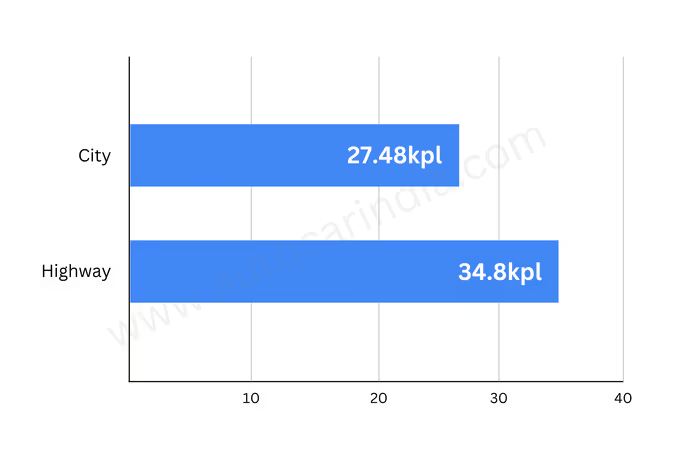390 Enduro R rivals Kawasaki’s KLX230, which uses a small engine and more fuel is efficient.
The KTM 390 Enduro R Middleweight segment brings severe off-road capacity, and it is also inherited by KTM’s updated 399cc single-cylinder engine. We have covered a few miles on Enduro R, and here are fuel efficiency figures obtained during our tests.
KTM 390 Enduro R Real-World Fuel Efficiency
390 Enduro R returned 27.48kPl fuel efficiency figure in the city and 34.8kPl on the highway
We conducted our fuel efficiency tests under real -world conditions, imitating typical city commutes and stable highway runs. Starting with 390 Enduro R and covering a total distance of 40.4 km, after which the bike consumed 1.47 liters of fuel. In the city, where stop-go traffic and frequent gear changes are ideal, 390 Enduro R gave 27.48kpl. On the highway, we repeated the same process and covered 68.4 km and topped the bike with 1.96 liters of fuel. On the open road where the bike can spread its feet at a consistent cruzing speed in the sixth gear, it returns an impressive 34.8kpl.
KTM 390 Enduro R Fuel-Economy Analysis
390 Enduro R gets 18 inch gear wheel compared to 390 adventure
These figures are commendable for a motorcycle with real off-road hardware, long journey suspension and nobbly tires. The engine tractable low-end and smooth throttle response felt less thirsty than helping to ride the city. On the highway, the nature and the gear ratio, hovering from the bike comfortably, allow it to sink the fuel conservatively.

Interestingly, Enduro R shares with its engine and internal gear ratio 390 adventureAnd 390 is a larger rear sprochet compared to Duke, above three teeth. The result is a bike that also makes a slow, technical area responsible without wandering far away from its street-bike roots in terms of efficiency.
With its 9-liter fuel tank, 390 Enduro R provides a useful real-world range of more than just 200 km, which is decent for duties of dual sports. For a motorcycle manufactured to deal with hard trails, this number shows that it does not object to taking home for a long time.
Autocar India’s fuel-defense test
Our fuel-south test routine begins to brim the first tank and ensures that the bike is running the manufacturer’s recommended tire pressure. The bike is then riding on a fixed city and highway routes, where we maintain average speed that keeping in mind the best scenarios as well as speed limits. The payload on the bike is kept stable by balanced by rider weight and ballast, ensuring stability in various vehicles and riders. At the end of the test cycle, the fuel tank is once again filled with brims, giving us an accurate figure how much fuel has been consumed against the trip meter reading.
See also: KTM 390 Enduro R Review: Agreeed but still enough enough?
KTM 390 adventure fuel economy test, explained
